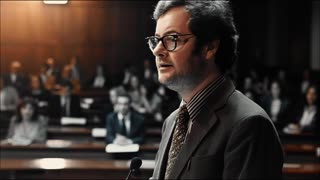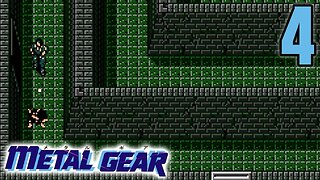How Dangerous Are Nuclear Power Plants?
The dark side of history: https://thememoryhole.substack.com/
An in-depth exploration of the energy landscape, particularly focusing on the choices faced by Austin voters regarding their participation in the South Texas Nuclear Project. Over the course of four consecutive nights, each spanning two hours, the program delves into various aspects of energy production and consumption.
The program features a mix of both archival material and new content to provide a comprehensive understanding of the issues at hand. Among the highlights are:
Archival Footage: Several earlier shows are revisited (programs 4, 14, 20), offering viewers a chance to revisit key discussions and insights related to energy.
Speech by Daniel Ellsberg: Viewers are presented with a tape of a speech delivered by Daniel Ellsberg, likely offering perspectives on nuclear energy, its risks, and broader societal implications. Ellsberg, known for his role in the release of the Pentagon Papers, brings a unique perspective to the discussion.
Special Report on Lignite Coal: A dedicated segment sheds light on the dangers associated with lignite coal, likely exploring its environmental impacts, health risks, and implications for energy policy.
Solar Energy Demonstration: The program showcases a practical demonstration of a working solar collector, underscoring the potential of renewable energy sources as alternatives to traditional fossil fuels and nuclear power.
Public Reaction to The China Syndrome: Interviews conducted at a theater gauge the impact of the film The China Syndrome on public opinion regarding nuclear energy. By speaking with individuals who have just viewed the film, the program seeks to understand how it might influence the upcoming referendum.
Media Analysis of Three Mile Island Accident: A critical analysis of media coverage surrounding the Three Mile Island accident is included, likely scrutinizing how the incident was portrayed and its implications for public perception of nuclear energy safety.
The China Syndrome is a 1979 American disaster thriller film directed by James Bridges and written by Bridges, Mike Gray, and T. S. Cook. The film stars Jane Fonda, Jack Lemmon, Michael Douglas (who also produced), Scott Brady, James Hampton, Peter Donat, Richard Herd, and Wilford Brimley. It follows a television reporter and her cameraman who discover safety coverups at a nuclear power plant. "China syndrome" is a fanciful term that describes a fictional result of a nuclear meltdown, where reactor components melt through their containment structures and into the underlying earth, "all the way to China".
The China Syndrome premiered at the 1979 Cannes Film Festival, where it competed for the Palme d'Or while Lemmon received the Best Actor Prize.[3] It was theatrically released on March 16, 1979, twelve days before the Three Mile Island nuclear accident in Dauphin County, Pennsylvania, which gave the film's subject matter an unexpected prescience. It became a critical and commercial success. Reviewers praised the film's screenplay, direction, and performances (most notably of Fonda and Lemmon), while it grossed $51.7 million on a production budget of $5.9 million. The film received four nominations at the 52nd Academy Awards; Best Actor (for Lemmon), Best Actress (for Fonda), Best Original Screenplay and Best Art Direction.[4]
Plot
While visiting the Ventana nuclear power plant outside Los Angeles, television news reporter Kimberly Wells, her cameraman Richard Adams and their soundman Hector Salas witness the plant going through a turbine trip and corresponding SCRAM (emergency shutdown). Shift Supervisor Jack Godell notices an unusual vibration in his cup of coffee.
In response to a gauge indicating high water levels, Godell begins removing water from the core, but the gauge remains high as operators open more valves to dump water. Another operator notices a second gauge indicating low water levels. Godell taps the first gauge, which immediately unsticks and drops to indicate very low levels. The crew urgently pumps water back in and celebrates in relief at bringing the reactor back under control.[a]
Adams has surreptitiously filmed the incident, despite being asked not to film for security reasons. Wells' superior refuses her report of what happened. Adams steals the footage and shows it to experts who conclude that the plant came perilously close to meltdown – the China syndrome.
During an inspection of the plant before it is brought back online, Godell discovers a puddle of radioactive water that has apparently leaked from a pump. He pushes to delay restarting the plant, but the plant superintendent wants nothing standing in the way of the restart.
Godell finds that a series of radiographs supposedly verifying the welds on the leaking pump are identical – the contractor simply kept resubmitting the same picture. He brings the evidence to the plant superintendent, who brushes him off as paranoid, stating that new radiographs would cost $20 million. Godell confronts Royce, an employee of Foster-Sullivan who built the plant, as it was he who signed off on the radiographs. Godell threatens to go to the Nuclear Regulatory Commission, but Royce threatens him; later, a pair of men from Foster-Sullivan park outside his house.
Wells and Adams confront Godell at his home and he voices his concerns. Wells and Adams ask him to testify at the NRC hearings over Foster-Sullivan's plans to build another nuclear plant. Godell agrees to obtain, through Salas, the false radiographs to take to the hearings.
Salas' car is run off the road and the radiographs are taken from him. Godell is chased by the men waiting outside his home. He takes refuge inside the plant, where he finds that the reactor is being brought up to full power. Grabbing a gun from a security guard, he forces everyone out, including his friend and co-worker Ted Spindler, and demands to be interviewed by Wells on live television. Plant management agrees to the interview in order to buy time as they try to regain control of the plant.
Minutes into the broadcast, plant technicians deliberately cause a SCRAM so they can distract Godell and retake the control room. A SWAT team forces its way in, the television cable is cut, and Godell is shot. Before dying, he feels the unusual vibration again. The resulting SCRAM is brought under control only by the plant's automatic systems, and the plant suffers significant damage as the pump malfunctions.
Plant officials try to paint Godell as emotionally disturbed, but are contradicted by a distraught Spindler on live television saying Godell was not crazy and would never have taken such drastic steps had there not been something wrong. A tearful Wells concludes her report and the news cuts to a commercial for microwave ovens.
Cast
Jane Fonda as Kimberly Wells
Jack Lemmon as Jack Godell
Michael Douglas as Richard Adams
Scott Brady as Herman DeYoung
James Hampton as Bill Gibson
Peter Donat as Don Jacovich
Wilford Brimley as Ted Spindler
Richard Herd as Evan McCormack
Daniel Valdez as Hector Salas
Stan Bohrman as Pete Martin
James Karen as Mac Churchill
Reception
Roger Ebert reviewed it as:
...a terrific thriller that incidentally raises the most unsettling questions about how safe nuclear power plants really are. ... The movie is ... well-acted, well-crafted, scary as hell. The events leading up to the "accident" in The China Syndrome are indeed based on actual occurrences at nuclear plants. Even the most unlikely mishap (a stuck needle on a graph causing engineers to misread a crucial water level) really happened at the Dresden plant outside Chicago. And yet the movie works so well not because of its factual basis, but because of its human content. The performances are so good, so consistently, that The China Syndrome becomes a thriller dealing in personal values.[5]
Movie Reviews UK noted the film is:
so accurate that, even though they're fictional, they could easily be documentaries...we see the greatest fears of the NIMBY culture unearthed when a nuclear power station almost goes out of control and the men-in-suits cover it up...[unknown] to them, the entire incident is covertly filmed by a visiting TV news-crew.
The acting is also credited:
The power of this film is more than just the acting, although Lemmon is superb, and more than just the script. It is that this scenario could really happen...atmosphere produced in the plants' control-room is heart-stoppingly intense; characters are uniformly well-acted. I recommend The China Syndrome to everyone as an example of the dangers of money and corruption.[6]
John Simon said The China Syndrome was a taut, intelligent, and chillingly gripping thriller till it turns melodramatic at its end. He called the ending both false and bathetic.[7]
The film has a rating of 88% on Rotten Tomatoes based on reviews from 40 critics. The critical consensus reads: "With gripping themes and a stellar cast, The China Syndrome is the rare thriller that's as thought-provoking as it is tense".[8] On Metacritic it has a score of 81 based on reviews from 16 critics, indicating "universal acclaim".[9]
Box office
The film opened in 534 theatres in the United States and grossed $4,354,854 in its opening weekend.[10]
Response of nuclear industry
The March 1979 release was met with backlash from the nuclear power industry's claims of it being "sheer fiction" and a "character assassination of an entire industry".[11] Twelve days later, the Three Mile Island nuclear accident occurred in Dauphin County, Pennsylvania. While some credit the accident's timing in helping to sell tickets,[12] the studio attempted to avoid appearing as if they were exploiting the accident, which included pulling the film from some theaters.[13]
Accolades
Award Category Recipient Result
Academy Awards[14] Best Actor Jack Lemmon Nominated
Best Actress Jane Fonda Nominated
Best Screenplay – Written Directly for the Screen Mike Gray, T. S. Cook and James Bridges Nominated
Best Art Direction Art Direction: George Jenkins
Set Decoration: Arthur Jeph Parker Nominated
British Academy Film Awards[15] Best Film James Bridges Nominated
Best Actor in a Leading Role Jack Lemmon Won
Best Actress in a Leading Role Jane Fonda Won
Best Screenplay Mike Gray, T. S. Cook and James Bridges Nominated
Cannes Film Festival[16] Palme d'Or James Bridges Nominated
Best Actor Jack Lemmon Won
David di Donatello Awards Best Foreign Actor Won[b]
Directors Guild of America Awards[17] Outstanding Directorial Achievement in Motion Pictures James Bridges Nominated
Golden Globe Awards[18] Best Motion Picture – Drama Nominated
Best Actor in a Motion Picture – Drama Jack Lemmon Nominated
Best Actress in a Motion Picture – Drama Jane Fonda Nominated
Best Director – Motion Picture James Bridges Nominated
Best Screenplay – Motion Picture Mike Gray, T. S. Cook and James Bridges Nominated
National Board of Review Awards[19] Top Ten Films 4th Place
National Society of Film Critics Awards Best Actor Jack Lemmon 4th Place
Satellite Awards Best Classic DVD Nominated
Writers Guild of America Awards[20] Best Drama Written Directly for the Screen Mike Gray, T. S. Cook and James Bridges Won
See also
Chernobyl (miniseries)
Nuclear and radiation accidents and incidents
Explanatory notes
The sequence of events in the movie is based on events that occurred in 1970 at the Dresden Generating Station outside Chicago. In that case, the indicator stuck low and the operators responded by adding ever more water.
Tied with Dustin Hoffman for Kramer vs. Kramer.
References
"The China Syndrome". Sunnycv.com. Archived from the original on February 27, 2014. Retrieved February 26, 2014.
"Box Office Information for The China Syndrome". Box Office Mojo. Retrieved January 28, 2012.
"Festival de Cannes: The China Syndrome". Festival-cannes.com. Archived from the original on January 18, 2012. Retrieved May 24, 2009.
"The China Syndrome (1979): Awards". Movies & TV Dept. The New York Times. 2012. Archived from the original on October 18, 2012. Retrieved June 27, 2018.
Ebert, Roger (January 1, 1979). "The China Syndrome Movie Review (1979)". Chicago Sun-Times. Archived from the original on January 20, 2021. Retrieved December 30, 2013.
"The China Syndrome (1979)". Film.u-net.com. Archived from the original on July 18, 2013. Retrieved December 30, 2013.
Simon, John (1982). Reverse Angle. Crown Publishers Inc. p. 377. ISBN 9780517544716.
"The China Syndrome". Rotten Tomatoes. Archived from the original on January 20, 2021. Retrieved July 23, 2022.
"The China Syndrome". Metacritic.
Pollock, Dale (June 20, 1979). "UA Puts Four-Day 'Rocky II' B. O. At $8.1 Million". Daily Variety. p. 1.
Burnham, David (March 18, 1979). "Nuclear Experts Debate 'The China Syndrome'". The New York Times. Archived from the original on January 2, 2021.
"The China Syndrome: Special Edition". Dvdverdict.com. Archived from the original on November 11, 2013. Retrieved December 30, 2013.
Movies That Shook the World, American Movie Classics 2006.
"The 52nd Academy Awards". Oscars. Archived from the original on May 22, 2019. Retrieved February 21, 2019.
"Film in 1980". BAFTA. Archived from the original on August 8, 2014. Retrieved February 21, 2019.
"The China Syndrome". Festival De Cannes. Archived from the original on February 22, 2019. Retrieved February 21, 2019.
"32nd Annual DGA Awards". Directors Guild of America. Archived from the original on November 30, 2020. Retrieved February 21, 2019.
"Winners & Nominees: China Syndrome, The". Golden Globes. Archived from the original on December 30, 2020. Retrieved February 21, 2019.
"1979 Award Winners". National Board of Review. Archived from the original on February 22, 2019. Retrieved February 21, 2019.
"Writers Guild Award Winners 1995–1949". Writers Guild Awards. Archived from the original on January 25, 2021. Retrieved February 21, 2019.
External links
The China Syndrome at IMDb Edit this at Wikidata
The China Syndrome at the TCM Movie Database
The China Syndrome at AllMovie
The China Syndrome at the American Film Institute Catalog
vte
Films directed by James Bridges
The Baby Maker (1970) The Paper Chase (1973) September 30, 1955 (1977) The China Syndrome (1979) Urban Cowboy (1980) Mike's Murder (1984) Perfect (1985) Bright Lights, Big City (1988)
vte
Michael Douglas
Career history Accolades
Producer
One Flew Over the Cuckoo's Nest (1975) The China Syndrome (1979) Romancing the Stone (1984) The Jewel of the Nile (1985) Flatliners (1990) Made in America (1993) The Rainmaker (1997) One Night at McCool's (2001) It Runs in the Family (2003) The Sentinel (2006) Beyond the Reach (2014) Flatliners (2017)
Related
Bigstick Productions Further Films The Bryna Company
Family
Kirk Douglas (father) Diana Dill (mother) Anne Buydens (stepmother) Joel Douglas (brother) Peter Douglas (half-brother) Eric Douglas (half-brother) Brenda Vaccaro (partner) Catherine Zeta-Jones (second wife) Cameron Douglas (son) Thomas Melville Dill (maternal grandfather) Nicholas Bayard Dill (maternal uncle)
vte
Anti-nuclear movement in the United States
General
Anti-nuclear groups in the US
California movement Great Peace March Nuclear history of the United States Nuclear power in the US
Canceled nuclear reactors in the US Nuclear weapons and the US Protests in the US Anti-nuclear advocates in the US
Organizations
and
groups
Abalone Alliance Alliance for Nuclear Responsibility Clamshell Alliance Committee for Nuclear Responsibility Corporate Accountability International Critical Mass Energy Project Friends of the Earth Greenpeace USA Institute for Energy and Environmental Research Mothers for Peace Musicians United for Safe Energy Nevada Desert Experience Nuclear Control Institute Nuclear Information and Resource Service Physicians for Social Responsibility Plowshares movement Ploughshares Fund Public Citizen Shad Alliance Sierra Club Three Mile Island Alert Women Strike for Peace Kings Bay Plowshares
People
Daniel Berrigan William J. Bichsel Bruce G. Blair Larry Bogart Helen Caldicott Barry Commoner Norman Cousins Frances Crowe Carrie Barefoot Dickerson Paul M. Doty Bernard T. Feld Randall Forsberg John Gofman Paul Gunter John Hall Jackie Hudson Sam Lovejoy Amory Lovins Bernard Lown Arjun Makhijani Gregory Minor Hermann Joseph Muller Ralph Nader Graham Nash Linus Pauling Eugene Rabinowitch Phil Radford Bonnie Raitt Carl Sagan Martin Sheen Karen Silkwood Thomas Louis Vitale Harvey Wasserman Victor Weisskopf
Main
protest
sites
Black Fox Bodega Bay Diablo Canyon Indian Point Lawrence Livermore Montague Naval Base Kitsap Nevada Test Site Rancho Seco Rocky Flats San Onofre Seabrook Shoreham Three Mile Island Trojan Vermont Yankee White House Peace Vigil Y-12 Weapons Plant Yankee Rowe
Books
Carbon-Free and Nuclear-Free Conservation Fallout: Nuclear Protest at Diablo Canyon Contesting the Future of Nuclear Power Critical Masses: Opposition to Nuclear Power in California, 1958–1978 The Cult of the Atom The Doomsday Machine (book) Fallout: An American Nuclear Tragedy Killing Our Own Licensed to Kill? The Nuclear Regulatory Commission and the Shoreham Power Plant Making a Real Killing: Rocky Flats and the Nuclear West Nuclear Implosions: The Rise and Fall of the Washington Public Power Supply System Nuclear Politics in America We Almost Lost Detroit
Films
Atomic Ed and the Black Hole The China Syndrome Countdown to Zero Dark Circle Nuclear Tipping Point Silkwood
Categories:
1979 films1970s disaster films1970s thriller filmsAmerican disaster filmsAmerican thriller filmsAnti-nuclear filmsColumbia Pictures filmsFilms about journalistsFilms about televisionFilms about whistleblowingFilms directed by James BridgesFilms produced by Michael DouglasFilms set in CaliforniaFilms shot in Los AngelesThree Mile Island accidentFilms about nuclear accidents1979 drama films1970s English-language films1970s American films
The South Texas Project Electric Generating Station (also known as STP, STPEGS, South Texas Project), is a nuclear power station southwest of Bay City, Texas, United States. STP occupies a 12,200-acre (4,900 ha) site west of the Colorado River about 90 miles (140 km) southwest of Houston. It consists of two Westinghouse Pressurized Water Reactors and is cooled by a 7,000-acre (2,800 ha) reservoir, which eliminates the need for cooling towers.
History
1971–1994
On December 6, 1971, Houston Lighting & Power Co. (HL&P), the City of Austin, the City of San Antonio, and the Central Power and Light Co. (CPL) initiated a feasibility study of constructing a jointly-owned nuclear plant. The initial cost estimate for the plant was $974 million[citation needed] (equivalent to approximately $5,700,741,167 in 2015 dollars[5]).
By mid-1973, HL&P and CPL had chosen Bay City as the site for the project and San Antonio had signed on as a partner in the project. Brown and Root was selected as the architect and construction company. On November 17, 1973 voters in Austin narrowly approved their city's participation[6] and the city signed onto the project on December 1. Austin held several more referendums through the years on whether to stay in the project or not.[7][8][9]
An application for plant construction permits was submitted to the Atomic Energy Commission, now the Nuclear Regulatory Commission (NRC), in May 1974 and the NRC issued the permits on December 22, 1975. Construction started on December 22, 1975.[10]
By 1978, the South Texas Project was two years behind schedule and had substantial cost overruns.[citation needed] A new management team had been put in place by HL&P in late 1978 to deal with the cost overruns, schedule delays and other challenges.[citation needed] However, events at Three Mile Island in March 1979 had a substantial impact on the nuclear industry including STNP.[citation needed] The new team again moved forward with developing a new budget and schedule. Brown and Root revised their completion schedule to June 1989 and the cost estimate to $4.4–$4.8 billion.[citation needed] HL&P executives consulted with its own project manager and concluded that Brown and Root was not making satisfactory progress and a decision was reached to terminate their role as architect/engineer but retain them as constructor.[citation needed] Brown and Root was relieved as architect/engineer in September 1981 and Bechtel Corporation contracted to replace them.[citation needed] Less than two months later, Brown and Root withdrew as the construction contractor and Ebasco Constructors was hired to replace them in February 1982 as constructor.[citation needed]
Austin voters authorized the city council on November 3, 1981 to sell the city's 16 percent interest in the STP.[11] No buyers were found.[citation needed]
Unit 1 reached initial criticality on March 8, 1988 and went into commercial operation on August 25.[12] Unit 2 reached initial criticality on March 12, 1989 and went into commercial operation on June 19.[13]
In February 1993, both units had to be taken offline to resolve issues with the steam-driven auxiliary feedwater pumps. They were not back in service until March (Unit 1) and May (Unit 2) of 1994.[citation needed] The history of STNP is somewhat unusual since most nuclear plants that were in the early stages of engineering construction at the time of the Three Mile Island event were never completed.[citation needed]
2006–present
On June 19, 2006, NRG Energy filed a letter of intent with the NRC to build two 1,358-MWe advanced boiling water reactors (ABWRs) at the South Texas Nuclear Project site.[14] South Texas Nuclear Project Partners CPS Energy and Austin Energy were not involved in the initial letter of intent and development plans.[citation needed]
On September 24, 2007, NRG Energy filed an application with the NRC to build two Toshiba ABWRs at the South Texas Nuclear Project site.[14] It was the first application for a nuclear reactor submitted to the NRC since 1979. The proposed expansion would generate an additional 2700 MW of electrical generating capacity, which would double the capacity of the site.[15] The total estimated cost of constructing the two reactors is $10 billion, or $13 billion with financing, according to Steve Bartley, interim general manager at CPS Energy.[citation needed]
In October 2009, main contractor Toshiba had informed CPS Energy that the cost would be "substantially greater," possibly up to $4 billion more. As a result of the escalating cost estimates for units 3 and 4,[16] in 2010 CPS Energy reached an agreement with NRG Energy to reduce CPS's stake in the new units from 50% to 7.625%. To that point, CPS Energy had invested $370 million in the expanded plant. CPS Energy's withdrawal from the project put the expansion into jeopardy.[citation needed]
In October 2010, the South Texas Project announced that the Tokyo Electric Power Company (TEPCO) had entered into an agreement with Nuclear Innovation North America (a joint venture between the reactor manufacturer, Toshiba, and plant partner NRG Energy) which was the largest of the two stakeholders in the proposed reactors, to purchase an initial 9.2375% stake in the expansion for $125 million, and $30 million for an option to purchase an additional stake in the new units for $125 million more (resulting in approximately 18% ownership by TEPCO, or 500 MW of generation capacity). The agreement was made conditional upon STNP securing construction loan guarantees from the United States Department of Energy.[17][18][19]
On 19 April 2011, NRG announced in a conference call with shareholders, that they had decided to abandon the permitting process on the two new units due to the ongoing expense of planning and slow permitting process. Anti-nuclear campaigners alleged that the financial situation of new partner TEPCO, combined with the ongoing Fukushima nuclear accident were also key factors in the decision.[20] NRG has written off its investment of $331 million in the project.[21]
Despite the April 2011 NRG announcement of the reactor's cancellation, the NRC continued the combined licensing process for the new reactors in October 2011.[22] It was unclear at the time why the reactor license application was proceeding. During early 2015 some pre-construction activities were performed on site and initial NRC documents listed the original targeted commercial operational dates as March 2015 for unit 3 and a year later for the other unit.[23] On February 9, 2016 the NRC approved the combined license.[24] Due to market conditions, no construction events occurred at that time. The two planned units do not currently have a planned construction date.[25]
On February 15, 2021 during a major power outage that impacted much of the state of Texas, an automatic reactor trip shut South Texas Nuclear Generation Station Unit 1 due to low steam generator levels. According to a Nuclear Regulatory Commission report, the low steam generator levels were due to loss of feedwater pumps 11 and 13. However, Unit 2 and both units at the Comanche Peak Nuclear Power Plant remained online during the power outage.
Electricity production
South Texas Project Electric Generating Station generated 21,920 GWh in 2022.
Generation (MWh) of South Texas Project Electric Generating Station[26] Year Jan Feb Mar Apr May Jun Jul Aug Sep Oct Nov Dec Total
2001 1,886,321 1,525,367 1,023,965 1,693,902 1,749,601 1,803,826 1,862,368 1,861,391 1,784,413 948,097 1,821,433 1,879,914 19,840,598
2002 1,877,631 1,694,952 1,874,294 1,802,364 1,853,569 1,651,816 1,804,722 1,863,231 1,809,080 961,912 648,839 1,207,192 19,049,602
2003 993,000 858,234 1,167,859 906,020 926,323 897,961 924,414 1,550,300 1,826,511 1,901,587 1,835,032 1,901,300 15,688,541
2004 1,794,208 1,783,984 1,866,066 967,940 1,898,881 1,833,986 1,888,035 1,886,885 1,832,462 1,898,705 1,846,256 1,874,559 21,371,967
2005 1,910,104 1,425,909 1,145,000 1,347,849 1,899,476 1,827,979 1,882,165 1,865,460 1,793,374 961,783 1,812,505 1,917,689 19,789,293
2006 1,918,500 1,734,226 1,916,180 1,848,924 1,902,066 1,835,603 1,894,140 1,889,118 1,754,581 949,107 1,751,295 1,974,529 21,368,269
2007 1,978,523 1,769,752 1,631,719 1,020,990 1,997,207 1,913,083 1,974,291 1,945,127 1,911,186 1,994,784 1,951,698 2,020,923 22,109,283
2008 2,027,749 1,894,252 1,857,380 1,059,644 1,996,808 1,911,071 1,970,008 1,968,743 1,883,018 1,091,075 1,804,680 2,028,321 21,492,749
2009 2,026,109 1,816,781 2,001,913 1,933,642 1,976,442 1,893,260 1,945,400 1,945,673 1,491,904 987,917 1,314,044 2,023,063 21,356,148
2010 1,901,689 1,616,544 1,878,021 959,782 1,894,264 1,905,405 1,965,866 1,889,669 1,908,067 2,000,442 1,180,689 2,026,343 21,126,781
2011 2,019,203 1,831,865 2,010,915 1,022,733 1,722,511 1,919,280 1,972,583 1,862,971 1,922,238 1,926,927 1,161,050 993,620 20,365,896
2012 1,000,676 932,122 954,597 1,191,768 1,996,956 1,916,509 1,972,364 1,968,957 1,917,986 1,618,514 1,046,510 2,027,134 18,544,093
2013 1,129,541 907,783 1,001,457 1,214,363 1,800,887 1,909,913 1,972,700 1,929,852 1,755,607 1,457,708 1,482,475 1,265,570 17,827,856
2014 1,996,545 1,803,728 1,467,789 949,590 965,031 1,819,148 1,938,482 1,937,255 1,886,353 1,964,871 1,929,852 1,993,023 20,651,667
2015 1,994,899 1,798,046 1,876,998 944,816 1,633,328 1,873,563 1,924,005 1,921,588 1,870,805 1,474,997 931,979 1,155,529 19,400,553
2016 1,867,890 1,853,605 1,971,083 1,899,518 1,791,929 1,869,512 1,921,476 1,921,320 1,863,053 1,199,327 1,551,143 1,984,447 21,694,303
2017 1,982,755 1,781,424 1,496,196 941,003 1,947,349 1,872,796 1,915,879 1,922,021 1,874,558 1,951,826 1,911,553 1,984,116 21,581,476
2018 1,990,840 1,791,895 1,716,130 1,026,669 1,948,056 1,862,498 1,926,877 1,926,702 1,862,974 1,104,073 1,542,275 1,988,643 20,687,632
2019 1,989,139 1,794,419 1,977,848 1,907,580 1,952,400 1,865,069 1,923,822 1,916,348 1,861,164 1,076,425 1,746,675 1,982,408 21,993,297
2020 1,981,132 1,854,898 1,386,851 1,267,605 1,965,407 1,887,512 1,941,500 1,925,033 1,879,619 1,963,043 1,910,507 1,995,650 21,958,757
2021 1,991,790 1,680,259 1,600,163 1,269,956 1,955,134 1,730,291 1,933,495 1,927,320 1,879,819 1,211,341 1,688,551 1,986,885 20,855,004
2022 1,996,621 1,804,682 1,990,353 1,908,367 1,953,488 1,870,425 1,924,485 1,927,102 1,859,877 1,164,373 1,533,211 1,986,901 21,919,885
2023 1,981,393 1,794,205 1,496,119 1,181,761
1985 whistleblowing case
Nuclear whistleblower Ronald J. Goldstein was a supervisor employed by EBASCO, which was a major contractor for the construction of the South Texas plants. In the summer of 1985, Goldstein identified safety problems to SAFETEAM, an internal compliance program established by EBASCO and Houston Lighting, including noncompliance with safety procedures, the failure to issue safety compliance reports, and quality control violations affecting the safety of the plant.[citation needed]
SAFETEAM was promoted as an independent safe haven for employees to voice their safety concerns. The two companies did not inform their employees that they did not believe complaints reported to SAFETEAM had any legal protection. After he filed his report to SAFETEAM, Goldstein was fired. Subsequently, Goldstein filed suit under federal nuclear whistleblower statutes.[citation needed]
The U.S. Department of Labor ruled that his submissions to SAFETEAM were protected and his dismissal was invalid, a finding upheld by Labor Secretary Lynn Martin. The ruling was appealed and overturned by the Fifth Circuit Court of Appeals, which ruled that private programs offered no protection to whistleblowers. After Goldstein lost his case, Congress amended the federal nuclear whistleblower law to provide protection for reports made to internal systems and prevent retaliation against whistleblowers.[27][page needed]
Ownership
The STPEGS reactors are operated by the STP Nuclear Operating Company (STPNOC). Ownership is divided among Constellation Energy at 44 percent, San Antonio municipal utility CPS Energy at 40 percent and Austin Energy at 16 percent.[28]
Surrounding population
The Nuclear Regulatory Commission defines two emergency planning zones around nuclear power plants: a plume exposure pathway zone with a radius of 10 miles (16 km), concerned primarily with exposure to, and inhalation of, airborne radioactive contamination, and an ingestion pathway zone of about 50 miles (80 km), concerned primarily with ingestion of food and liquid contaminated by radioactivity.[29]
In 2010, the population within 50 miles (80 km) of the station was 254,049, an increase of 10.2 percent since 2000; the population within 10 miles (16 km) was 5,651, a 2.4 percent decrease. Cities within 50 miles include Lake Jackson (40 miles to the city center) and Bay City.[30]
Seismic risk
The Nuclear Regulatory Commission's estimate of the risk each year of an earthquake intense enough to cause core damage to the reactor at South Texas was 1 in 158,730, according to an NRC study published in August 2010.[31][32]
Reactor data
The South Texas Generating Station consists of two operational reactors. A two reactor expansion (Unit 3 and Unit 4) was planned but later cancelled.
Reactor unit[33] Reactor plant type Capacity (MW) Construction started Electricity grid connection Commercial operation Current license expiration
Net Gross
South Texas-1 Westinghouse 4-loop PWR 1280 1354 22 December 1975 30 March 1988 25 August 1988 20 August 2047
South Texas-2 11 April 1989 19 June 1989 15 December 2048
South Texas-3 (cancelled)[34] ABWR 1350 1400 License terminated (2018)[35]
South Texas-4 (cancelled)[36]
See also
flagTexas portaliconEnergy portalNuclear technology portal
List of largest power stations in the United States
Largest nuclear power plants in the United States
List of power stations in Texas
References
Johnston, Louis; Williamson, Samuel H. (2023). "What Was the U.S. GDP Then?". MeasuringWorth. Retrieved November 30, 2023. United States Gross Domestic Product deflator figures follow the MeasuringWorth series.
NextAxiom, A message from (2023-07-05). "U.S. nuclear capacity factors: Resiliency and new realities". American Nuclear Society -- ANS. Retrieved 2023-07-05.
"Reactor Details". PRIS. 1975-12-22. Retrieved 2023-07-05.
"Reactor Details". PRIS. 1975-12-22. Retrieved 2023-07-05.
1634–1699: McCusker, J. J. (1997). How Much Is That in Real Money? A Historical Price Index for Use as a Deflator of Money Values in the Economy of the United States: Addenda et Corrigenda (PDF). American Antiquarian Society. 1700–1799: McCusker, J. J. (1992). How Much Is That in Real Money? A Historical Price Index for Use as a Deflator of Money Values in the Economy of the United States (PDF). American Antiquarian Society. 1800–present: Federal Reserve Bank of Minneapolis. "Consumer Price Index (estimate) 1800–". Retrieved February 29, 2024.
"General Municipal Election: November 17, 1973" City of Austin
"General Municipal Election: August 14, 1976" City of Austin
"General Municipal Election: January 20, 1979" City of Austin
"General Municipal Election: April 7, 1979" City of Austin
Power Reactor Information System of the IAEA: South Texas
"General Municipal Election: November 3, 1981" City of Austin
"PRIS - Reactor Details". pris.iaea.org. Retrieved 2021-02-17.
"PRIS - Reactor Details". pris.iaea.org. Retrieved 2021-02-17.
"EPC Next Step In CPS Energy's Evaluation of Nuclear Option" CPS Energy
"NRG Files First Full Application for U.S. Reactor" Bloomberg.com
"$6.1 million spent to end nuclear deal" Express News CPS Energy STNP Expansion Termination Article
"TEPCO Partners in STP Expansion" STP Press Release
"CPS Energy sees need for new STP units". World Nuclear News. June 30, 2009. Retrieved 2009-06-28.
"Nuclear cost estimate rises by as much as $4 billion". October 28, 2009. Retrieved 2009-10-28.
"NRG ends project to build new nuclear reactors". The Dallas Morning New. April 19, 2011. Archived from the original on 2016-04-09. Retrieved 2015-03-14.
Matthew L. Wald (April 19, 2011). "NRG Abandons Project for 2 Reactors in Texas". New York Times.
"Licensing Board to Conduct Hearing Oct. 31 in Rockville, Md., on South Texas Nuclear Project New Nuclear Reactor Application" (PDF). US NRC Press Releases. US Federal Government. Retrieved 13 October 2011.
United States Nuclear Regulatory Commission. (October 29, 2013). "STP 3 & 4 Environmental Report-1.1.2.7 Proposed Dates for Major Activities". South Texas Project Units 3 & 4 COLA (Environmental Report), Rev. 10. Retrieved February 23, 2015. http://pbadupws.nrc.gov/docs/ML1331/ML13311B781.pdf
"Regulators approve new nuclear reactors near Houston". 10 February 2016.
feds-approve-new-nuclear-reactors-near-houston fuelfix.com,2016/02/09
"Electricity Data Browser". www.eia.gov. Retrieved 2023-01-07.
Kohn, Stephen Martin (2011). The Whistleblower's Handbook: A Step-by-Step Guide to Doing What's Right and Protecting Yourself. Guilford, CT: Globe Pequot Press. pp. 116–18. ISBN 9780762774791.
"About Us" South Texas Project Nuclear Operating Company
"Backgrounder on Emergency Preparedness at Nuclear Power Plants". Nuclear Regulatory Commission. Retrieved 2019-12-22.
"Nuclear neighbors: Population rises near US reactors". NBC News. 2011-04-14. Retrieved 2023-07-05.
Bill Dedman, "What are the odds? US nuke plants ranked by quake risk," NBC News, March 17, 2011 http://www.nbcnews.com/id/42103936 Accessed April 19, 2011.
"Archived copy" (PDF). Archived from the original (PDF) on 2017-05-25. Retrieved 2011-04-19.
Power Reactor Information System of the IAEA: „United States of America: Nuclear Power Reactors- Alphabetic“
Power Reactor Information System of the IAEA: „Nuclear Power Reactor Details – SOUTH TEXAS-3“
https://www.nrc.gov/reactors/new-reactors/col/south-texas-project.html Issued Combined Licenses for South Texas Project, Units 3 and 4 by the NRC
Power Reactor Information System of the IAEA: „Nuclear Power Reactor Details – SOUTH TEXAS-4“
Sources
"Milestones". South Texas Project Nuclear Operating Company. Retrieved Jul. 14, 2005.
"CenterPoint Energy Historical Timeline". CenterPoint Energy. Retrieved Jul. 14, 2005.
External links
Energy Information Administration page
vte
Nuclear power in the United States
NRC Region I
(Northeast)
Beaver Valley Calvert Cliffs FitzPatrick Ginna Hope Creek Limerick Millstone Nine Mile Point Peach Bottom Salem Seabrook Susquehanna
NRC Region II
(South)
Browns Ferry Brunswick Catawba Farley Harris Hatch McGuire North Anna Oconee Robinson Sequoyah St. Lucie Summer Surry Turkey Point Vogtle Watts Bar
NRC Region III
(Midwest)
Braidwood Byron Clinton Cook Davis–Besse Dresden Enrico Fermi LaSalle Monticello Palisades Perry Point Beach Prairie Island Quad Cities
NRC Region IV
(West)
Arkansas Callaway Columbia Comanche Peak Cooper Diablo Canyon Grand Gulf Palo Verde River Bend South Texas Waterford Wolf Creek
Converted
Fort St. Vrain Midland Somerset Zimmer
Closed
ANPP
MH-1A ML-1 PM-1 PM-3A SL-1 SM-1 SM-1A Big Rock Point Connecticut Yankee Crystal River CVTR DAEC EBR I EBR II Elk River Fermi 1 Fort Calhoun Fort St. Vrain Hallam Hanford Site Humboldt Bay Indian Point Kewaunee La Crosse Maine Yankee Millstone Unit 1 Oyster Creek Pathfinder Pilgrim Piqua Rancho Seco San Onofre Saxton Shippingport Shoreham Sodium Reactor Experiment Three Mile Island Trojan Vallecitos Vermont Yankee Yankee Rowe Zion
Cancelled
(incomplete list,
whole plants only)
Allens Creek Atlantic Bailly Barton Bell Bend Bellefonte Black Fox Blue Hills Bodega Bay CFPP, Idaho Cherokee Clinch River Douglas Point Erie Forked River Galena Greene County Hartsville Haven Lee Levy County Marble Hill MM-1 Montague Offshore Sears Isle South River Stanislaus Summer-2/3 Sundesert Victoria WPPSS
1 and 4 3 and 5 Yellow Creek
Future
North Anna-3 Turkey Point-6/7
Under construction
Vogtle-3/4
Regions of the Nuclear Regulatory Commission Anti-nuclear movement in the United States Nuclear history of the United States Nuclear reactor accidents in the United States Nuclear safety in the United States
Categories:
Energy infrastructure completed in 1988Energy infrastructure completed in 1989Buildings and structures in San AntonioBuildings and structures in Matagorda County, Texas1976 establishments in TexasNuclear power stations with proposed reactorsNuclear power plants in TexasNuclear power stations using advanced boiling water reactorsNuclear power stations using pressurized water reactorsCPS EnergyNRG Energy
-
 48:10
48:10
The Memory Hole
1 day agoThe "Sick Fantasies" of the CIA and the Cult of Intelligence: The First Book Censored by the CIA
3851 -
 21:33
21:33
TudorDixon
19 hours agoRestoring Integrity and Public Safety with Courtney Kramer | The Tudor Dixon Podcast
5.15K38 -
 24:55
24:55
Degenerate Plays
17 hours agoSnake In The Box - Metal Gear: Part 4
5.59K3 -
 11:26
11:26
Game Developer
19 hours agoMaking Your First Game? You Must Do THIS...
7.69K7 -
 5:16
5:16
ParisDemers
21 hours agoBatman's Training Program Will Change Your Life! (Real Life Training)
7.66K4 -
 1:02:01
1:02:01
World Nomac
14 hours ago24 Hours in Asia's CRAZIEST CITY|Bangkok Thailand 🇹🇭
13.3K -
 2:27:08
2:27:08
Fresh and Fit
9 hours agoStew Peters Drops THIS Bomb Om The Panel
125K391 -
 6:46:06
6:46:06
SynthTrax & DJ Cheezus Livestreams
1 day agoFriday Night Synthwave 80s 90s Electronica and more DJ MIX Livestream 80s Van Damme Edition
22.8K15 -
 2:23:31
2:23:31
Fresh and Fit
15 hours agoStew Peters Meets Fresh&Fit
117K189 -
 2:31:33
2:31:33
FusedAegisTV
11 hours agoLOST MY 📱 PHONE IN THE FL OCEAN... 🙃 💔| F IT Max Payne 3 RUMBLE CREATOR HOUSE
54.5K13